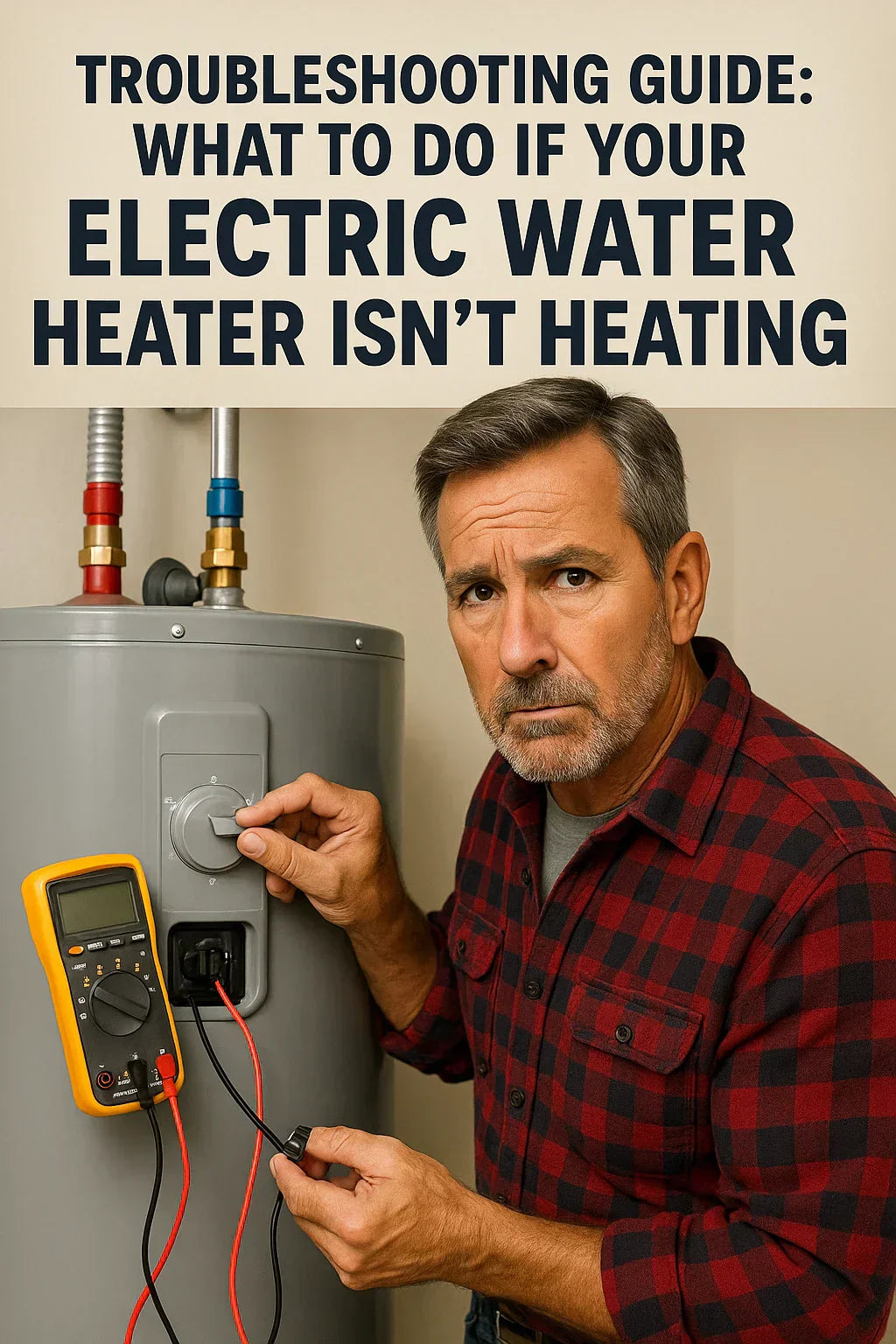If your electric water heater suddenly stops producing hot water, it can throw your entire household routine into chaos. No hot showers, dishes left undone, and clothes sitting unwashed. But before you panic and call a plumber, take a deep breath — many electric water heater problems are relatively easy to diagnose and even fix yourself.
This comprehensive guide walks you through all the key reasons why your electric water heater may not be heating properly — from a tripped circuit breaker to a failed heating element — and gives you practical steps to troubleshoot each one.
How an Electric Water Heater Works
Before diving into diagnostics, it helps to understand the basic operation of an electric water heater:
-
Cold water enters the tank through a dip tube.
-
Two heating elements (upper and lower) warm the water using electricity.
-
Thermostats regulate temperature and cycle the elements on/off.
-
Hot water exits through the top when a faucet or appliance is turned on.
If any one of these components fails — the power supply, thermostat, or heating element — your water may turn lukewarm or go completely cold.
Is It Completely Cold or Just Not Hot Enough?
First, assess the nature of the problem:
| Symptom | Likely Cause |
|---|---|
| No hot water at all | Tripped breaker, faulty thermostat, heating element |
| Water is lukewarm or runs out fast | Lower element failure, sediment, dip tube |
| Water takes a long time to reheat | Thermostat misset, buildup in tank |
This step can help narrow down your troubleshooting path and save time.
Step 1: Check the Power Supply
✅ Checklist:
-
Go to your electrical panel and check if the circuit breaker has tripped.
-
Electric water heaters typically use a 240-volt double-pole breaker.
-
If it’s in the middle position, switch it off and then fully back on.
⚠️ Note:
If the breaker keeps tripping, it may be due to:
-
A short in the heating element
-
A faulty thermostat
-
Electrical wiring issues
Don’t keep resetting a breaker that trips repeatedly — this is a fire risk and needs professional attention.
Step 2: Reset the High-Temperature Cutoff
Inside the top access panel of the heater is a red reset button — the high-limit switch. It trips if the water gets dangerously hot.
🔧 How to Reset:
-
Turn off the breaker to the water heater.
-
Remove the upper access panel and insulation.
-
Press the red reset button firmly.
-
Reassemble and restore power.
If it trips again, this may indicate a faulty thermostat or shorted element causing runaway heating.
Step 3: Test the Thermostat
Each heating element has a thermostat next to it (upper and lower). The upper thermostat governs the lower one.
🔎 Symptoms of a Bad Thermostat:
-
Hot water runs out quickly
-
Only one element is turning on
-
Water temperature is inconsistent
🧪 How to Test:
-
Turn off power and use a multimeter to check for continuity.
-
No continuity = replace the thermostat.
Most electric water heaters use a screw terminal thermostat which is easy to replace with basic tools.
Step 4: Inspect the Heating Elements
Heating elements are submerged in the tank and are the most likely components to fail over time — especially in hard water areas.
🔎 Signs of a Bad Element:
-
No hot water = likely upper element
-
Quick hot water loss = likely lower element
🧪 How to Test:
-
Power off the unit.
-
Disconnect wires from the element.
-
Use a multimeter to check resistance (should read 10–20 ohms).
-
A reading of 0 or ∞ (infinity) means the element is bad.
🔁 How to Replace:
-
Drain the tank.
-
Use a water heater element wrench.
-
Replace with same wattage/rating element.
Step 5: Sediment Buildup and Maintenance
If the heater is heating water slowly or partially, sediment buildup could be insulating the heating elements from water.
🔧 What to Do:
-
Drain the tank fully.
-
Flush water through the drain valve until clear.
-
Refill and restart system.
If sediment is too thick to flush, the tank may need descaling or full element replacement.
Step 6: Check for a Faulty Dip Tube
The dip tube ensures cold water goes to the bottom of the tank. If it breaks, cold water mixes at the top and exits before being heated.
🔍 Symptoms:
-
Water is hot for only a few seconds.
-
You’ve ruled out thermostat and element issues.
Replacing a dip tube is inexpensive but requires shutting off and partially draining the tank.
When to Call a Pro
You may need a licensed technician if:
-
The breaker continues to trip even after replacing elements/thermostats.
-
There are signs of tank leakage.
-
You’re uncomfortable working with 240V wiring.
-
The system is over 10–12 years old and near end-of-life.
How to Prevent Future Heating Failures
Maintenance can extend the life of your water heater dramatically:
✅ Drain the tank every 6–12 months
✅ Replace the anode rod every 3–5 years
✅ Install a sediment filter on the cold water inlet
✅ Set the thermostat to 120°F to prevent overheating
✅ Test the pressure relief valve annually
Final Thoughts
Most issues with electric water heaters that stop heating can be traced to either the power source, thermostat, or heating elements. With a multimeter, some basic tools, and this guide, even a novice DIYer can identify and resolve many common problems.
But don’t hesitate to call a professional when needed — especially if electricity is involved or the tank shows signs of serious wear. If your unit is over a decade old, replacement might be more cost-effective than repeated repairs.
In the next topic we will know more about: How to Maintain Your Electric Water Heater for Long-Term Performance







